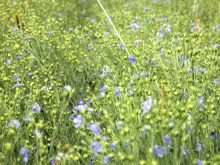The UN atomic agency called Dec. 2 for greater trust and investment in using radiation to bolster crops against climate change and disease as a way to save millions from hunger.
The technique has been around since the 1920s and proven effective but its spread has been limited by phobias over the words “radiation” and “mutation,” the International Atomic Energy Agency said in a statement.
But unlike bioengineered genetic modification of crops (GM), irradiating plant species – a process known as “induced mutation” – does not introduce any foreign genetic material.
Read Also

Mazergroup’s Bob Mazer dies
Mazergroup’s Bob Mazer, who helped grow his family’s company into a string of farm equipment dealerships and the main dealer for New Holland machinery in Saskatchewan and Manitoba, died July 6 from cancer.
“The world is experiencing unprecedented levels of drought and flood causing crop failures. How are we going to address this issue which can only get worse?” said Chikelu Mba, head of the plant-breeding laboratory run jointly by the IAEA and the UN Food and Agriculture Organization (FAO) outside Vienna.
“With the advent of biotechnologies as a sort of panacea for (crop productivity), the nuclear technique somehow got pushed to the back burner in recent times. But it’s time for a concerted effort to revisit it to help feed people,” he told reporters.
“Induced mutation” exposes a plant to radiation to speed up natural changes to its genetic code, which might normally take millions of years, to resist evolving threats like disease, pests, saline soil or drought.
The method is safe and cost effective, requiring no notable upgrade in infrastructure beyond investment in training people in the method in needy countries, Mba said.
Pierre Lagoda, overall chief of the IAEA-FAO project, acknowledged the technology still faced resistance because of prejudices against anything nuclear.
“In our case it’s important to understand that in plant breeding we are not producing anything that is not produced by nature itself. There is no residual radiation left in a plant after mutation induction,” he said in a statement.
“We are just mimicking nature.” To date, the IAEA said, irradiation of crops under its auspices had yielded more than 3,000 crop varieties from 170 plant species, including barley that grows at 5,000 metres altitude and rice that thrives in saline soil.
The FAO wants to hold a food summit within six months to seek fairer trade and help poor farmers make a decent living.


















